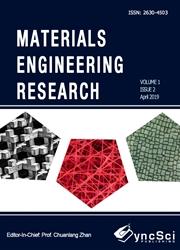Comparison of aero engine component lifing methods
引用次数: 2
Abstract
Failure of critical engine components such as compressor, fan, and turbine disks during flight can cause the loss of the engine, aircraft, or even life. To reduce the risk of this failure during flight, different methodologies and tools have been developed to determine the safe operating life of these critical disk components. The two most widely used lifing methods, safe-life and damage tolerance, are inherently conservative, retiring all components when a predetermined operating limit is reached. Both methods retire components with theoretical useful life remaining. Additional lifing methods can be used to reduce this conservatism and extend the life of these components. Retirement for cause, developed within the United States Air Force is a lifing method that can extend the life of components by retiring a component only when there is cause to do so. Military and industry standards on lifing methodologies were reviewed. Both deterministic and probabilistic approaches to disk lifing methods are discussed as well as current tools. This paper provides a comparison of the methodologies and tools currently being used today by both the government and industry.航空发动机部件吊装方法比较
在飞行过程中,压气机、风扇、涡轮盘等关键发动机部件的故障可能会导致发动机、飞机甚至寿命的损失。为了降低飞行过程中这种故障的风险,已经开发了不同的方法和工具来确定这些关键磁盘组件的安全运行寿命。两种最广泛使用的寿命方法,安全寿命和损伤容限,本质上是保守的,当达到预定的工作极限时,就会淘汰所有部件。这两种方法都使部件在理论上仍有使用寿命的情况下退役。可以使用额外的寿命方法来减少这种保守性并延长这些组件的寿命。美国空军内部开发的因故退役是一种使用寿命的方法,它可以通过仅在有必要时退役组件来延长组件的寿命。审查了有关寿命方法的军事和工业标准。本文讨论了磁盘寿命方法的确定性和概率方法以及当前的工具。本文对政府和工业界目前使用的方法和工具进行了比较。
本文章由计算机程序翻译,如有差异,请以英文原文为准。
求助全文
约1分钟内获得全文
求助全文

 求助内容:
求助内容: 应助结果提醒方式:
应助结果提醒方式:


